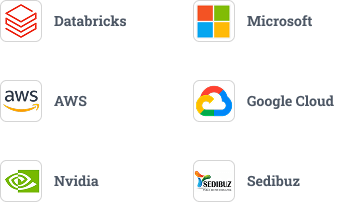Here’s something for trivia. It is Kevin Ashton, a British technology pioneer, who has invented the term Internet of Things or IoT. I mention this because lately everyone is excited about IoT and very keen on implementing it for all possible business scenarios. From connected cars, smart homes, to smart kitchens, IoT is set to transform our lives and businesses.
According to GE estimates, the convergence of machines, data, and analytics will become a $200 billion global industry over the next three years.
Like every new technology, there are some successes and some failures with IoT too. However, I firmly believe that the failure of IoT (in whichever scenarios it has happened), is not because of the technology but because of other factors such as lack of understanding of the technology, lack of expertise, lack of collaboration between IT and business, and most importantly, lack of good quality data. A majority of the businesses fail to scrutinize the data they have at hand – the core on which it functions. Unless and until the data gathered is of superior quality, it would not be wise to expect IoT to bear 100% results. Let me explain why.
How IoT projects fail
I was recently reading a survey by Cisco which found that as much as 60% of the IoT projects fail at POC stage itself! I think that the main reason for this could be that businesses are not adequately equipped to handle the transition to an IoT system, followed by having staff which is not at all trained to manage the new operations. Every department needs to be in sync with how the IoT technology functions so that the data generated can be smoothly exchanged for eventual outcomes. Thus, along with the integration of devices if proper training of personnel is not carried out then the lack of ground work causes failure at the very implementation phase.
The other issues are with security and privacy of data – errors in transmission and data storage, improper usage of data, and so on.
The most important one of all, however, is poor data quality. According to Gartner, 40% of all business initiatives fail to achieve their targeted benefits due to substandard data quality.
Two of the biggest examples of faulty data sources would be the 2016 US elections and the Brexit results. In both the scenarios, the predictions went completely wrong thanks to the way data was collected and its analysis.
A little about data quality
Hence, having the right data is important. It basically includes good quality data, sufficient quantity of data, and reliable sources, to name a few aspects. Relevant and accurate data which is consistent across data sources proves to be helpful to make maximum use of resources – again, something which is essential for a newly begun project to take off. Simple things like preventing viruses from affecting your devices ensure that the data stays usable for a longer period of time.
Confirming that there are no manufacturing defects is also crucial so that the generated data is free of any discrepancies, in case it needs to be further replicated. In other words, if we need quality data, we need quality devices as well. Following which, to further ensure thorough quality, businesses also need to check for accuracy of data and its source.
On these lines, I feel investing in solid data management systems is a good idea especially to take care of data integration. It will provide a business with proper tools and techniques for the benefit of its employees, as well as build better data assets. Managing services and improving on accountability will also become easier with sound data at hand.
Businesses undoubtedly need to work on quality because only then can they sustain the rat-race. For instance, in 2015, some 15 billion objects were connected to the Internet. However, by 2020, 200 billion objects are predicted to be connected to the Internet. Data has the capacity to provide unique insights and is a powerful tool for business intelligence and analytics. The only thing to remember is that it needs to stay clear of any errors and has to bear the ability to bring in results. IoT has a massive potential and is something which is opening up a lot of opportunities for businesses by automating tasks and exploring machine learning. It is allowing interconnectivity of decisions and, thus, benefiting everyone who is associated with it at each step. This also means that it will continue to create more and more information or data in the coming years to completely change the way processes happen at the moment.



